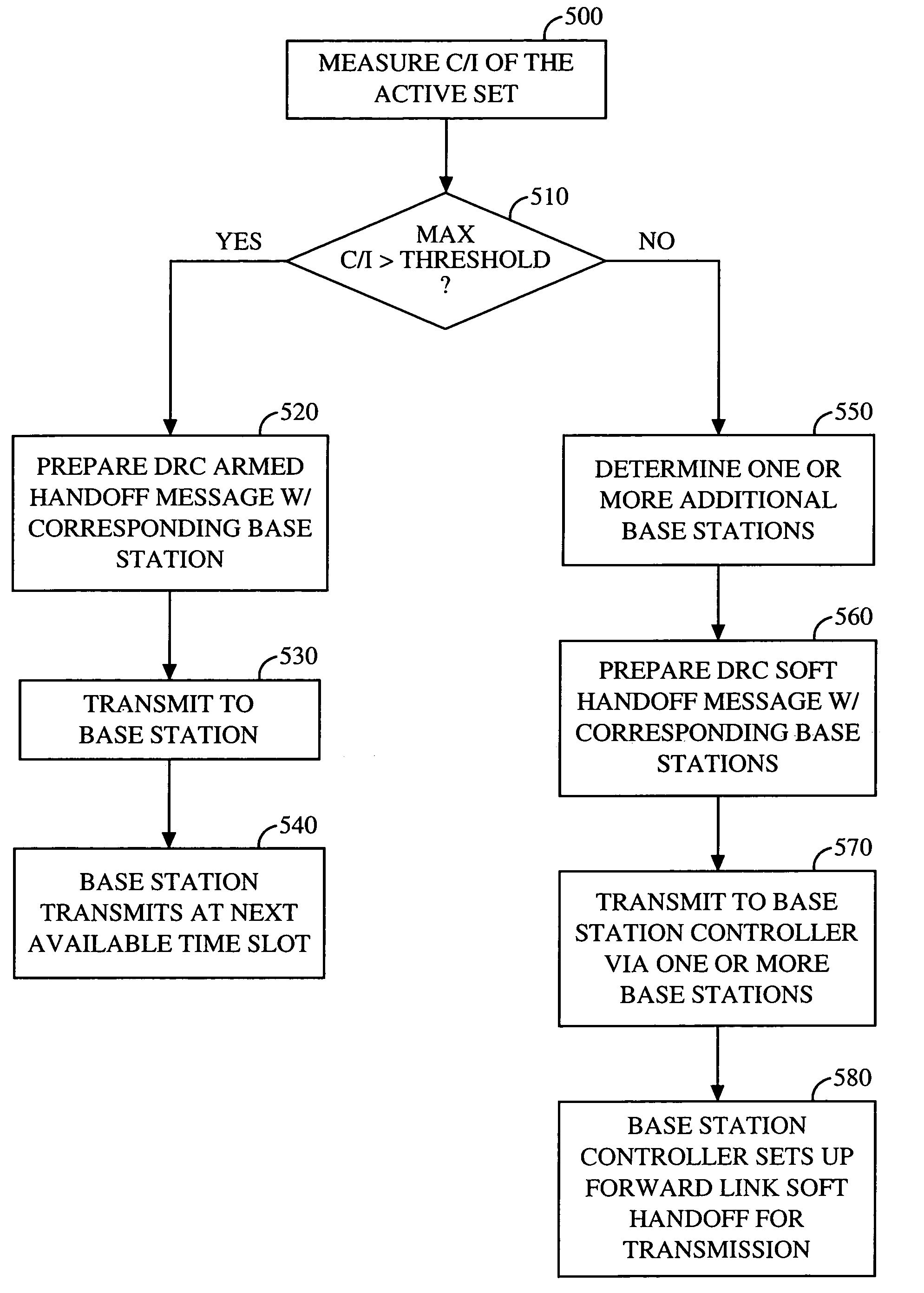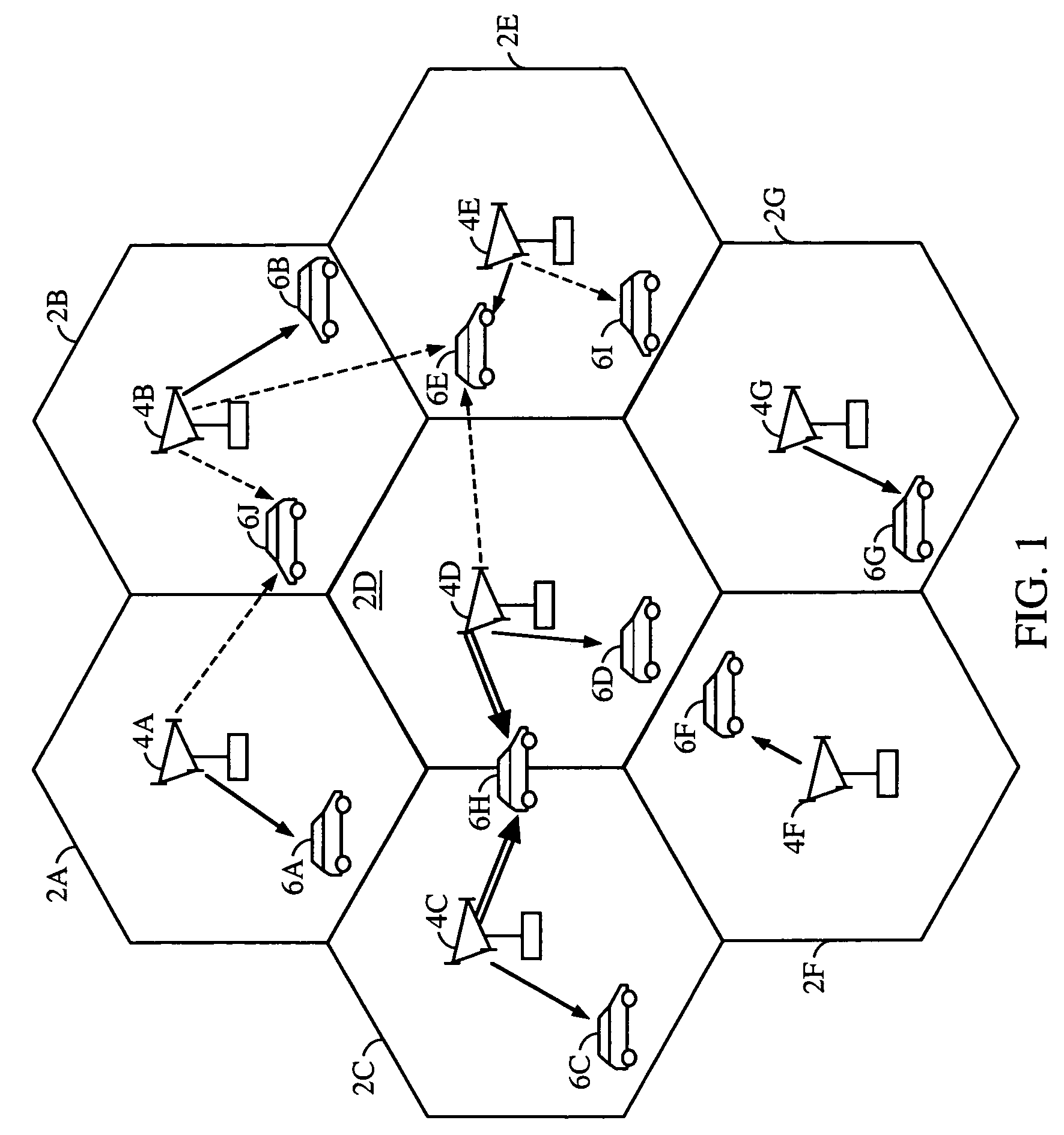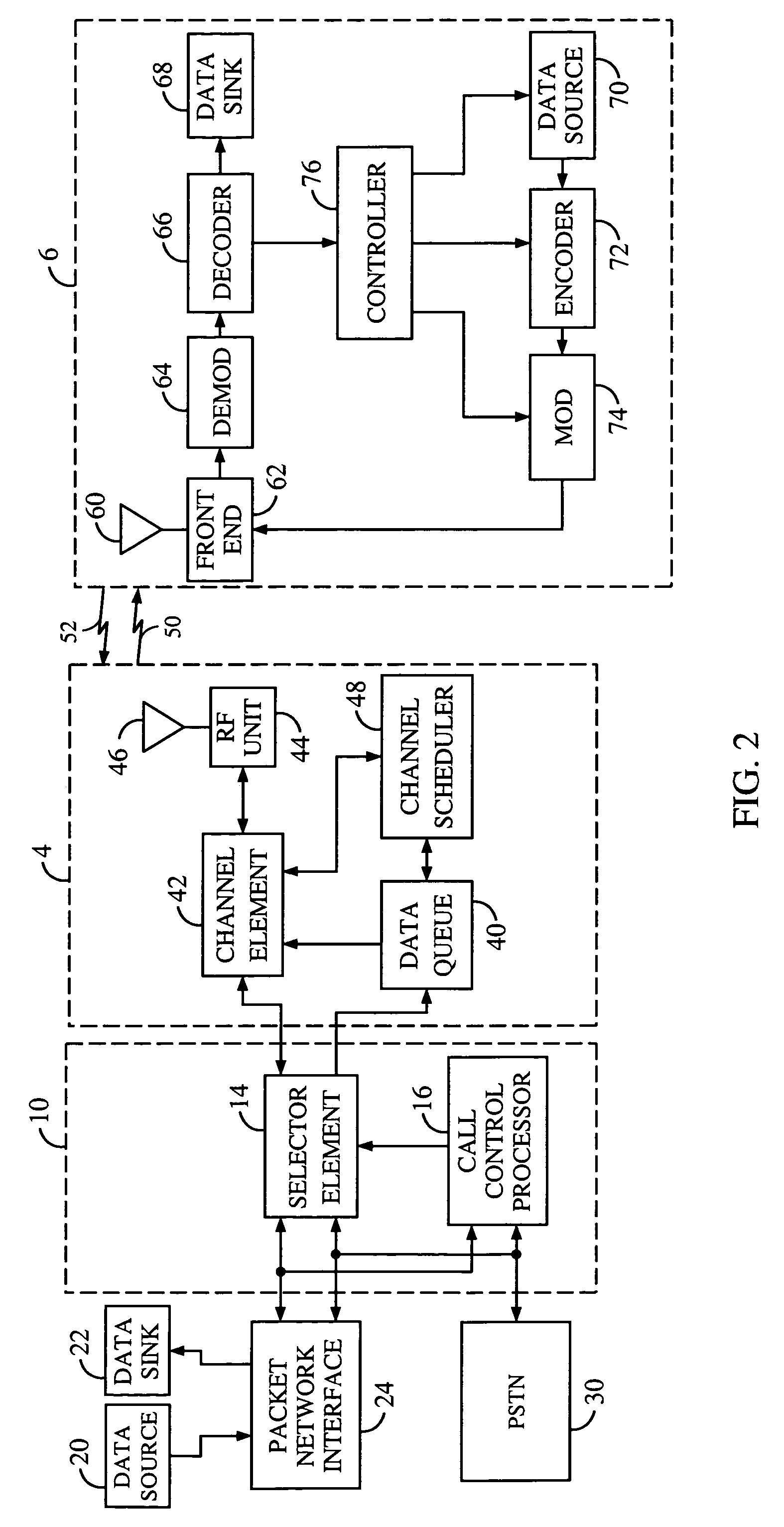Communication system employing multiple handoff criteria
a communication system and handoff criteria technology, applied in multiplex communication, wireless communication, wireless communication, etc., can solve the problems of imposing stringent and fixed delay requirements, severe soft handoff on system capacity, random variation of path loss, etc., to optimize system capacity, optimize overall system capacity, optimize backhaul network traffic
- Summary
- Abstract
- Description
- Claims
- Application Information
AI Technical Summary
Benefits of technology
Problems solved by technology
Method used
Image
Examples
Embodiment Construction
[0033]FIG. 1 represents the exemplary data communication system of the present invention. Each cell 2, denoted as 2a-2g, is serviced by a corresponding base station 4, denoted as 4a-4g, respectively. Various mobile stations 6 (denoted as 6a-6j) are dispersed throughout the data communication system. In the exemplary embodiment, each mobile station 6 can be in communication with one or more base stations 4 on the reverse link, depending on whether the mobile station 6 is in soft handoff. The reverse link communication is not shown in FIG. 1 for simplicity.
[0034]The term mobile station, as used throughout, includes any access terminal, such as a fixed wireless handset, handheld computers, unmanned data terminals, etc. The term base station, as used throughout, includes any access point. Commonly found in modern communications systems are sectorized base stations. Such a base station contains more than one sector, with each sector covering a unique portion of the cell (typically with s...
PUM
 Login to View More
Login to View More Abstract
Description
Claims
Application Information
 Login to View More
Login to View More - R&D
- Intellectual Property
- Life Sciences
- Materials
- Tech Scout
- Unparalleled Data Quality
- Higher Quality Content
- 60% Fewer Hallucinations
Browse by: Latest US Patents, China's latest patents, Technical Efficacy Thesaurus, Application Domain, Technology Topic, Popular Technical Reports.
© 2025 PatSnap. All rights reserved.Legal|Privacy policy|Modern Slavery Act Transparency Statement|Sitemap|About US| Contact US: help@patsnap.com



